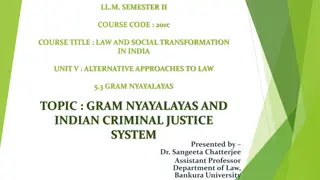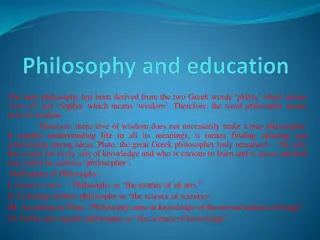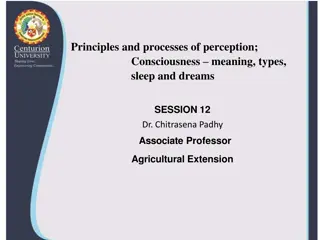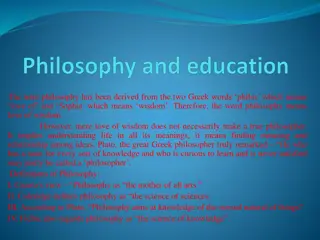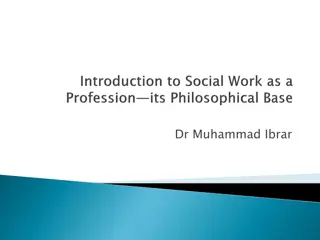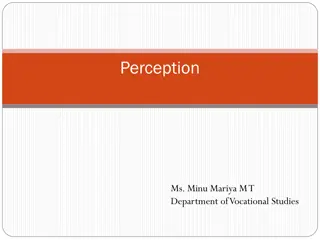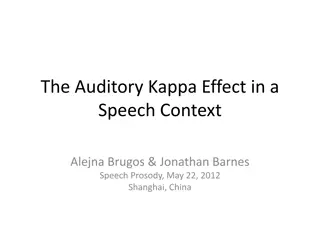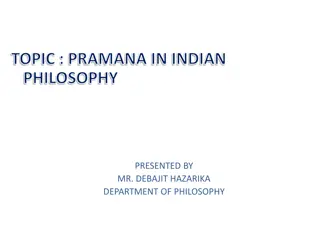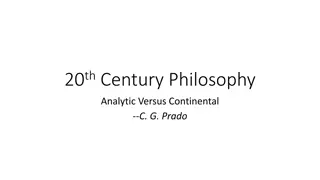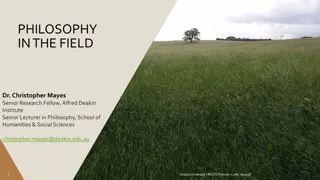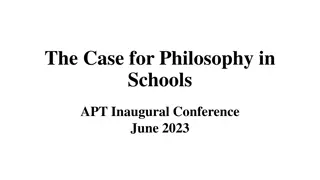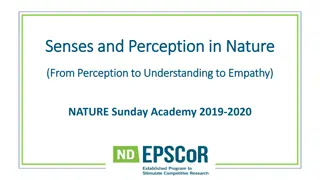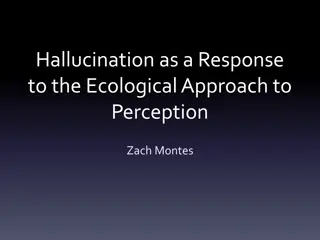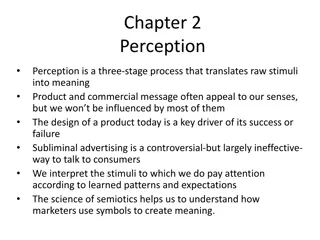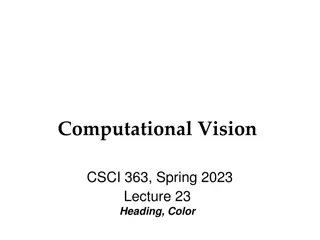Understanding Perception in Nyaya Philosophy: An Introduction to Laukika Sannikara
Nyaya philosophy defines perception as knowledge arising from the contact between a sense organ and its object, known as Sannikara. This contact can be direct or indirect, leading to various kinds of Sannikaras such as Sayoga, Sayokta-samavya, Samaveta-samavya, Samavya, and Viśeṣa-viśeṣabhāva. Each type of perception elucidates different relationships between the sense organ, the object, and the quality perceived.
Download Presentation

Please find below an Image/Link to download the presentation.
The content on the website is provided AS IS for your information and personal use only. It may not be sold, licensed, or shared on other websites without obtaining consent from the author. Download presentation by click this link. If you encounter any issues during the download, it is possible that the publisher has removed the file from their server.
E N D
Presentation Transcript
LAUKIKA SANNIKARA According to Ny ya Introduced by Dr. Gopal Debnath Associate Professor Department of Philosophy
INTRODUCTION According to Ny ya Philosophy Perception is that knowledge which is aroused from the contact of a sense-organ with its object. This contact is known as Sannikar a. This sannikar a may be aroused directly or indirectly. When the contact of the sense-organ with its object is aroused directly is called laukika sannikarsa. It may be of six kinds- sa yoga, sa yokta-samav ya, samaveta samav ya, samav ya and vi e ana-vi e yabh va sannikarsa. sa yokta samaveta samav ya,
SAYOGA SANNIKARSA Sa yoga means the relation between two substances. When we perceive an object with our eyes then the sannikarsa is sa yoga. Since the relation between sa yoga and eye and its perceived object e.g. a flower both are substances, so this relation is called sa yoga. In short, when any object is perceived by our eyes, the sannikarsa is sa yoga. two substances is
SAYOKTA SAMAVYA SANNIKARSA Samav ya means These objects may be substance-quality (Dravya guna), Substance-action (Dravya-karma), etc. The perception of the quality of an object is aroused from which contact is called Sa yokta samav ya. When we perceive red colour of a rose then the sannikarsa is Sa yokta samav ya. Because the relation between red colour and its object i.e. rose is samav ya and the relation between the sense organ i.e. the eyes and the rose is sa yoga. So, to the perception of red colour of the rose is sa yokta samav ya. an eternal relation between two objects.
SAYOKTA-SAMAVETA-SAMAVYA SANNIKARSA We perceive not merely a quality, but also we can perceive the universal of that object. For example- As we perceive a red colour of a rose, same as we perceive redness(universal) of sannikarsa is the above. Because the relation between red and redness and red and rose is samav ya, again the relation between the eyes and the rose is sa yoga. Thus the sannikarsa is sa yoga-samav ya-samav ya. Its another name is the above sannikarsa. the rose. jati Here i.e. the that
SAMAVYA SANNIKARA The perception of sound is aroused from samav ya sannikarsa. According to Ny ya, our sense-organ ear nothing but the space or k sa and sound is the quality of the k sa. Since the relation between sound and k sa is samav ya, and our sense-organ ear = k sa , so the relation between sound and ear is samav ya.
SAMAVETA SAMAVYA SANNIKARSA Again, as we perceive the sound of an object, just like that we can perceive its jati soundness also. As sound inheres in k sa which is the substance of sound, same as the soundness inheres in sannikarsa is inherence in the inherrent i.e. samav ya-samav ya. Its samaveta samav ya. sound. Thus the another name is
Visesana-Visesyabhava sannikarsa An absence may sometimes be perceived by a sense-organ. I am seeing the absence of a book on the table. This perception surely dependent on a sannikarsa. What is it? According to Nyaya, this relation is visesana- visesyabh va sannikarsa. Its explanation is that when I perceive the absence of a book on the table, at that time my eye is connected with the table, which is visesya. But the knowledge is being of absence of the book, which is visesana of that table. So the sannikara is sa yokta- visesanata. Its another visesyabh va sannikarsa. name is visesana-
IN SHORT SA YOGA SANNIKAR A- Substance (eye)+ Substance (rose) SA YOKTA SAMAV YA SANNIKAR A- Eye + quality of Substance (red of rose) SA YOKTA-SAMAVETA-SAMAV YA SANNIKAR A- Eye + universal of quality (redness of red) SAMAV YA SANNIKAR A- Ear + sound SAMAVETA SAMAV YA SANNIKAR A- Ear + universal of sound (soundness) Vi e a a-Vi e yabh va sannikar a- Eye + the absence of substance


